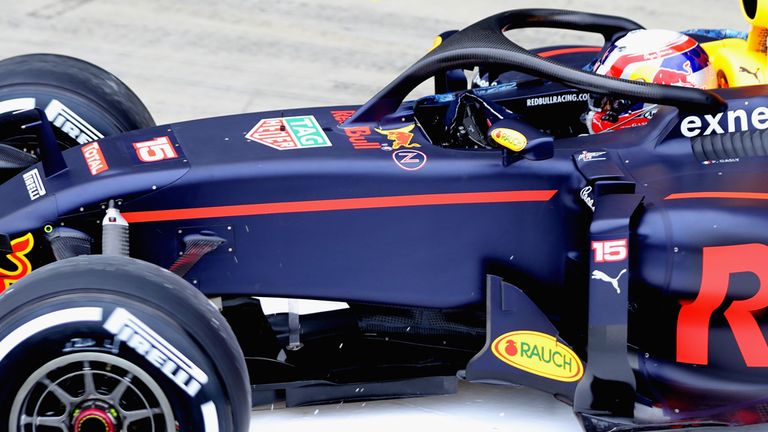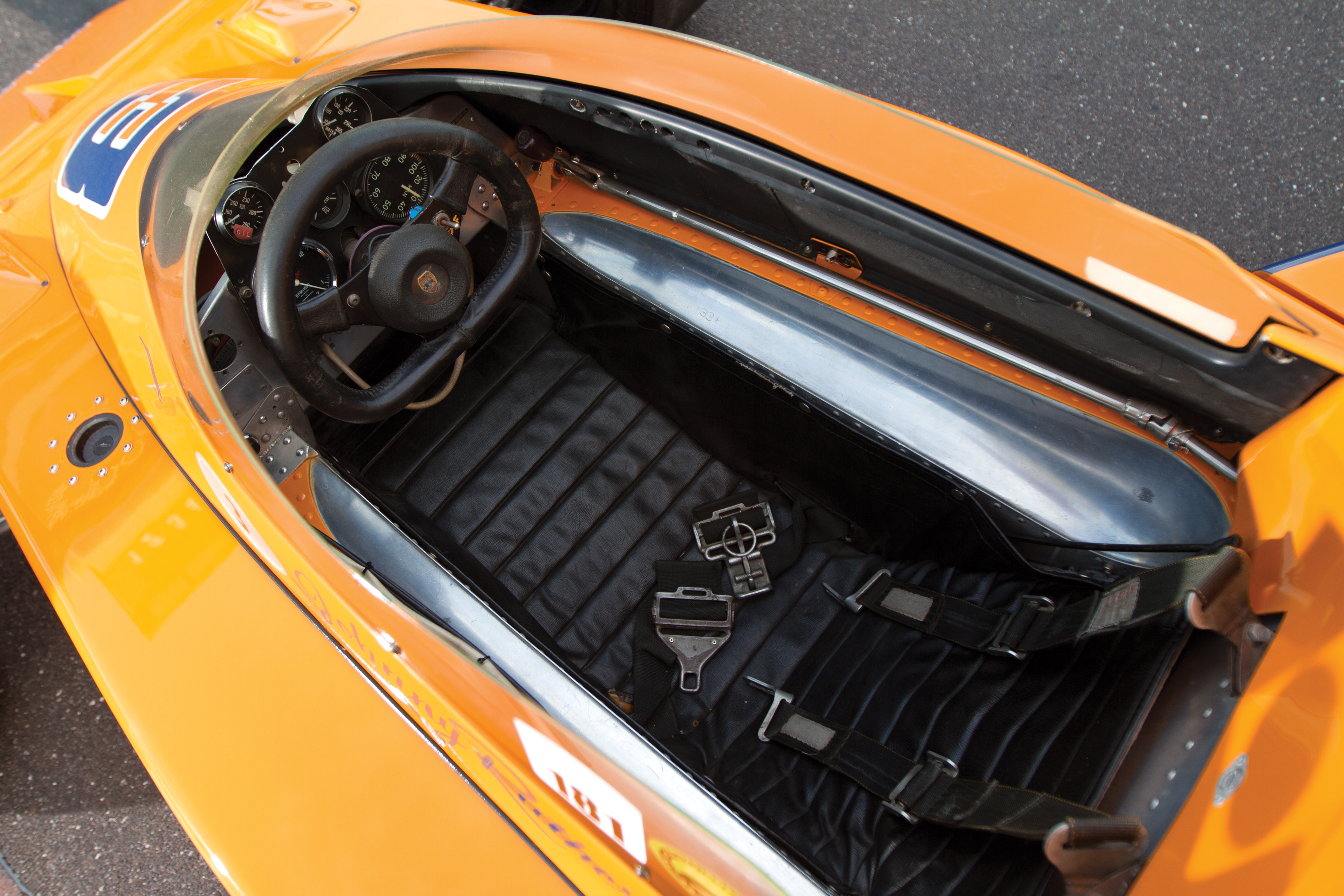
as you can see, at the very best, an object will be deflected or altered course that it is directed away from the helmet. however, since there is no reinforcement on the top, and as you can clearly see the there is a huge slope down where a large chunk of the side of the helmet is exposed, something like a wheel will still have pretty much enough room to hit a helmet, especially if it is in a tumbling motion - or if it were to come downward from above.
i agree to the point that the halo was tested with the wheel aimed with the tire rubber compound towards the beam, and that could have influence on the impact results, there
might have been more damage inflicted when the steel side of the wheel would impact the halo first and foremost.
still, i'll repeat that even if theoretically the half-canopy in the video shown is of lesser quality than what we see mounted to the cockpit of an indy car here, it's not like a wheel hub impact is impossible to happen - and the material shattered. i maintain that as far as all forms of visual evidence we have untill now, anything compareable to this indy device, has not passed the test in the demands presented; partially deflecting minimally absorbing energy is not sufficient to the demands presented.
i would really like to see evidence / proof that this screen DOES pass that test. that would surely bring a great improvement, and would speak volumes for this solutions practicality and aesthetic supremacy over the FIA's solution.
nevertheless, as fully evident, the helmet still is exposed.
had this 'windscreen' been able to fully protect the helmet to the sides, and had a titanium/carbon/steel reinforcement beam been mounted atop of the screen (it doesn't HAVE to be as thick as the halo), the combination of the application strong enough to withstand realistic impact figures, then i'd be all the more impressed with this design.
don't get me wrong - i'm glad theyre doing work with a screen instead of a metal bar, and i sincerely hope they'll succeed and surpass the HALO or simply meet the same demands.
at this point, it does not express a professional alternative to the halo's head protection. as a windscreen itself it looks fine, and i assume they'll be able to make sure there is no visual distortion from the driver's POV.
if it actually does work, there's a mountain of possibilities - HUD display as in modern cars showing speed, revs, digitally on the screen. laptimes. sector times. speed traps. time defecit to driver ahead or behind.
visual references of putting the car in what mode by operating the steering wheel.
bright flashing saftey car, virtual safety car, PIT STOP NOW messages, yellow, green, red, etc. flag messages on the screen through the hud, even if it would only be a bright green yellow or red dot flashing.
it would make the screen on the steering wheel much less needed for these jobs and would greatly improve the driver's sight on the track by not needing to focus back and forth.
i wonder if it wouldn't also bring some fantastic shots in night races as we might see data lighting up on the screen.
so there are countless positives for this application - as long as it actually works, and unfortunately, there is no evidence that it does.
anyway, in 3 days there will be a test, so i'm curious to the driver's experiences, how it looks completed on the car.
but i also really want to see how they have tested this device - if they actually have tested it at all in a way similar to what the FIA did.
i did realize though that the windscreen dirt accumilation might not be such an issue after all - f1 drivers have the same 'problem' with their helmet visors and remove layer after layer during a race which they can pull of easily.
theoretically, the same can be put on the windscreen, only in a larger scale, with a 'lip' or 'contact point' where the driver can EASILY tear off the entire layer. how? i don't know, but i'm sure some fancy brains can figure that one out.
so i'll take that one off the list of negatives for this concept.







